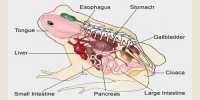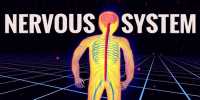After the entry of the egg in the intestine of the host, the shell is dissolved by the intestinal juice of the host and the larva is freed from the shell. They pierce the intestinal epithelium and enter into the lymphatic vessels or the blood capillaries. They travel to various organs along with the blood circulation: At this condition, for sometime, the larvae are entrapped in the lungs. Ascending the respiratory tube the larvae reach to the pharynx.
Due to their presence the throat of the host irritates and this may cause coughing. Along with cough the larvae comes up to the throat. They again reach the intestine if one swallows the cough. The larvae once again change their shell in the intestine. Here ends their migratory life. When inside the intestine, they are nutrited by taking digested food juice from the host. Within a few days the larva changes into a full worm.
In Bangladesh the incidence of infection of this worm is very high. Most of the children of our country suffer from this infection. A single host may contain 100 to 400 worms. They produce Ascariasis disease in children. When intensity of infection is high, the illness may take a serious turn.

An affected person shows the following symptoms:
- The belly of the children becomes swelled up.
- When the number of worms increases in the intestine, vomiting tendency and loss of appetite are observed. In the final stage worms may come out with vomit.
- Indigestion and physical weakness are seen.
- Balance between acid and alkali is lost in the intestine.
- Due to infection with round worm the patient feels pain in the belly and anemia is developed.














